Some of the lumps were black widow spiders, which I decided were not interesting.
The rest were beetles, like this:
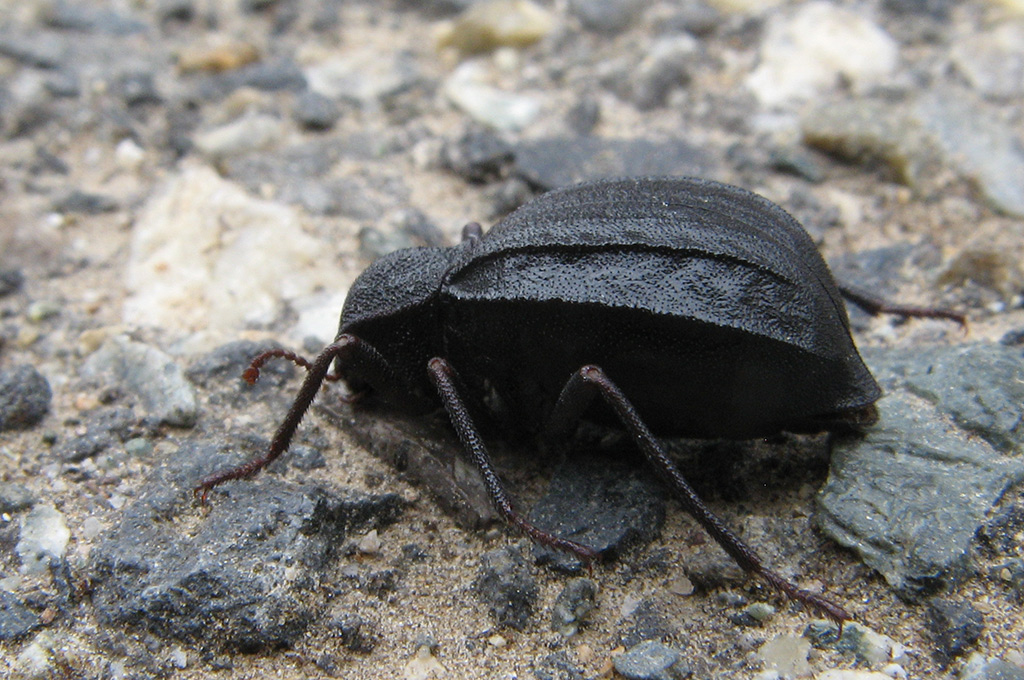
The beetles did not look particularly interesting either, but I collected a few specimens to look at later, just in case.
They turned out to be more interesting than I had guessed.
Here is the reason why: (crossed-eye stereo pair)
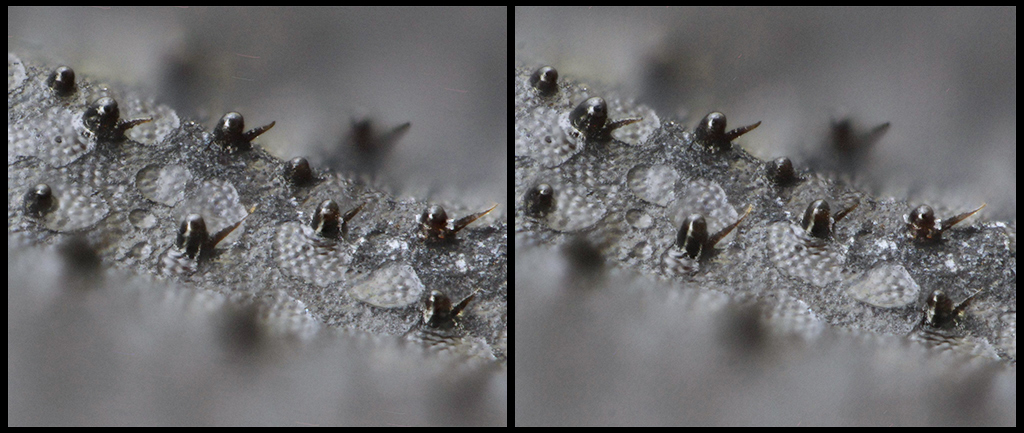
Putting things in context, here is what you're looking at. This is the tail end of the beetle. The rectangle marks an area that is shown larger below, and the smallest inner line shows the area that is focused in the stereo pair above.
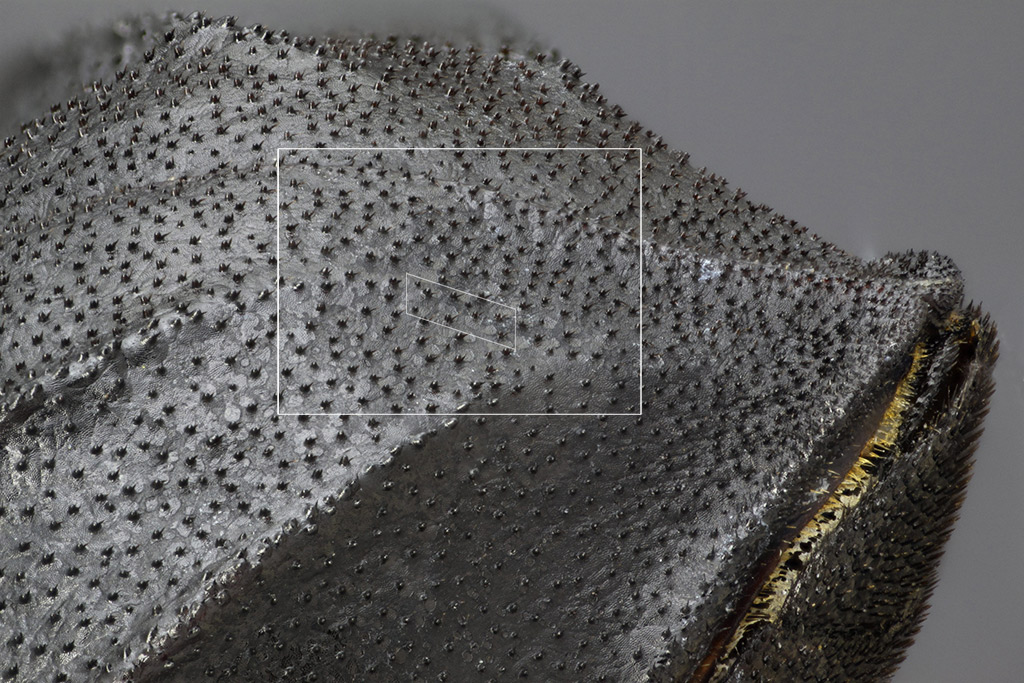
Zooming in:
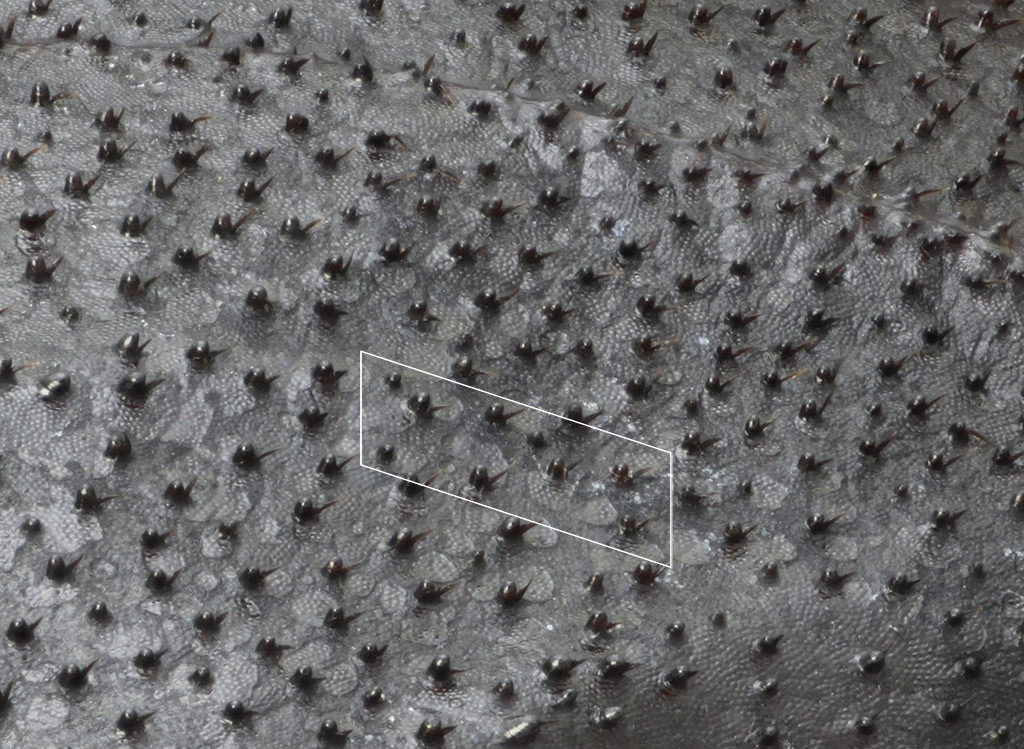
Here again is the extreme closeup, even larger this time:
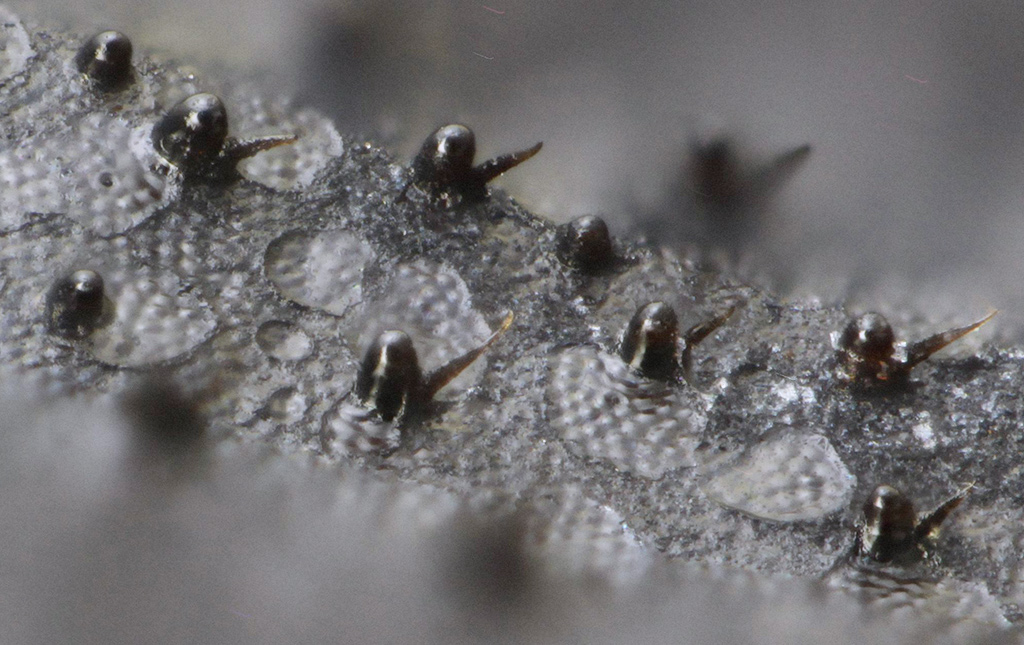
I do not recall ever having seen this sort of bump-and-spine structure, but on the other hand I've never before looked this close at any darkling beetle.
It was not much trouble to track down an ID to species level. This is Philolithus densicollis.
I am especially confident about ID this time, because one of the resources that turned up in my search was a 1978 US Government report titled "Darkling beetle populations (Tenebrionidae) of the Hanford site in southcentral Washington" [HERE]. The site does not quite touch my house, but its border is within easy walking distance. Quoting from the report's summary:
Those of you who are interested in methods of investigation might enjoy reading those portions of the report that describe how they figured out what the beetles were eating. Short version: they trapped a lot of beetles, dissected out the digestive tracts, and compared the contents against a reference collection "of all plant species known to occur within study areas ... dried, partially ground (1mm screen size), and mounted on a glass slide". It looks like the samples and reference library were prepared at Hanford, then all the slides sent to a group at Colorado State University for interpretation and data entry. (This was 1978, so data entry was by keypunch. The Fortran program they used to summarize the data is listed in an appendix.)This 3-yr study documents the taxonomic composition, relative abundance, and seasonal distribution of darkling beetles occupying the Hanford Site in southcentral Washington. A taxonomic key and species diagnosis are provided to assist in identification by the nonspecialist. Analysis of food plant availability and selection serves to identify transfer pathways through beetle populations and permits construction of food web diagrams depicting the flow of materials through the darkling beetle component.
For this species, the report notes (pg 5.23) that:
Further information about the beetle is easily found by searching. Most of the pictures on BugGuide were shot within 20 miles of my location, at the same time of year.A total of 38 different food items was taken by this beetle (Table 5.21), indicating that this is an omnivorous species. Western tansymustard (D. pinnata) (17%), cryptogams (17%), winterfat (E. lanata (9%), big sagebrush (A. tridentata) (9%), and greasewood (S. vermiculatus) (7%), were the most frequently consumed food items.
The elytra photographs were shot with 5X and 20X Mitutoyo M Plan Apo objectives, paired with a Raynox DCR-150 tube lens to give 5.2X and 20.8X magnification onto a Canon T1i sensor (22.3mm x 14.9mm).
Illumination is through a cylinder of tracing paper, around which two LED flashlights were carefully placed to get modeling that clearly showed the bumps and spines. The whole-body picture is posed using a different specimen, shot with a Canon A710 compact camera on an overcast day.
--Rik
